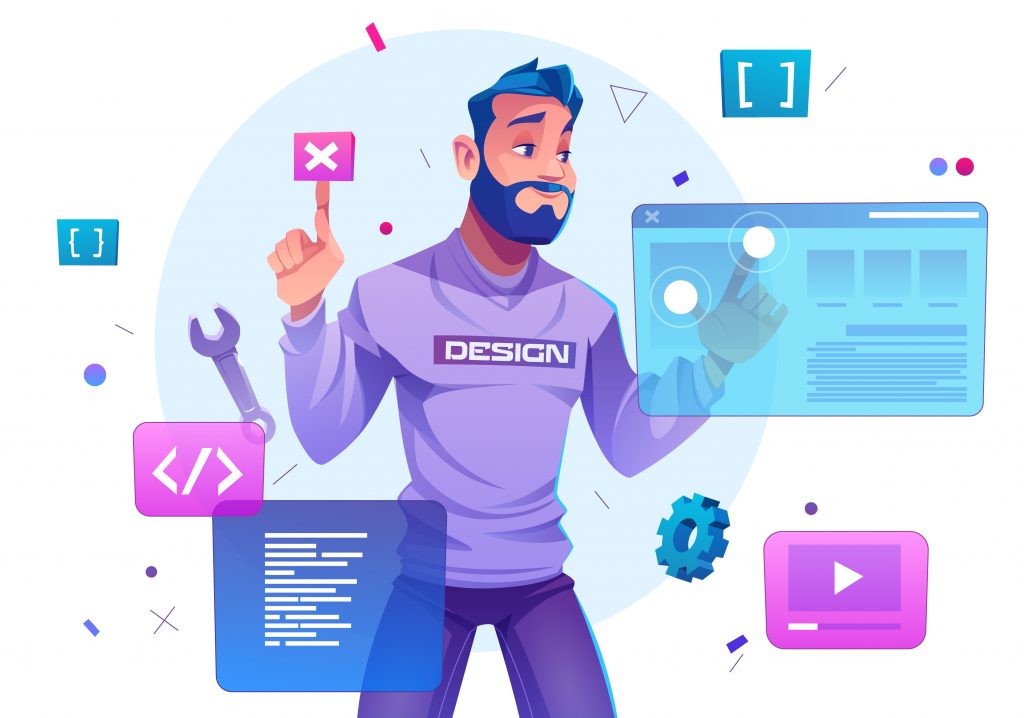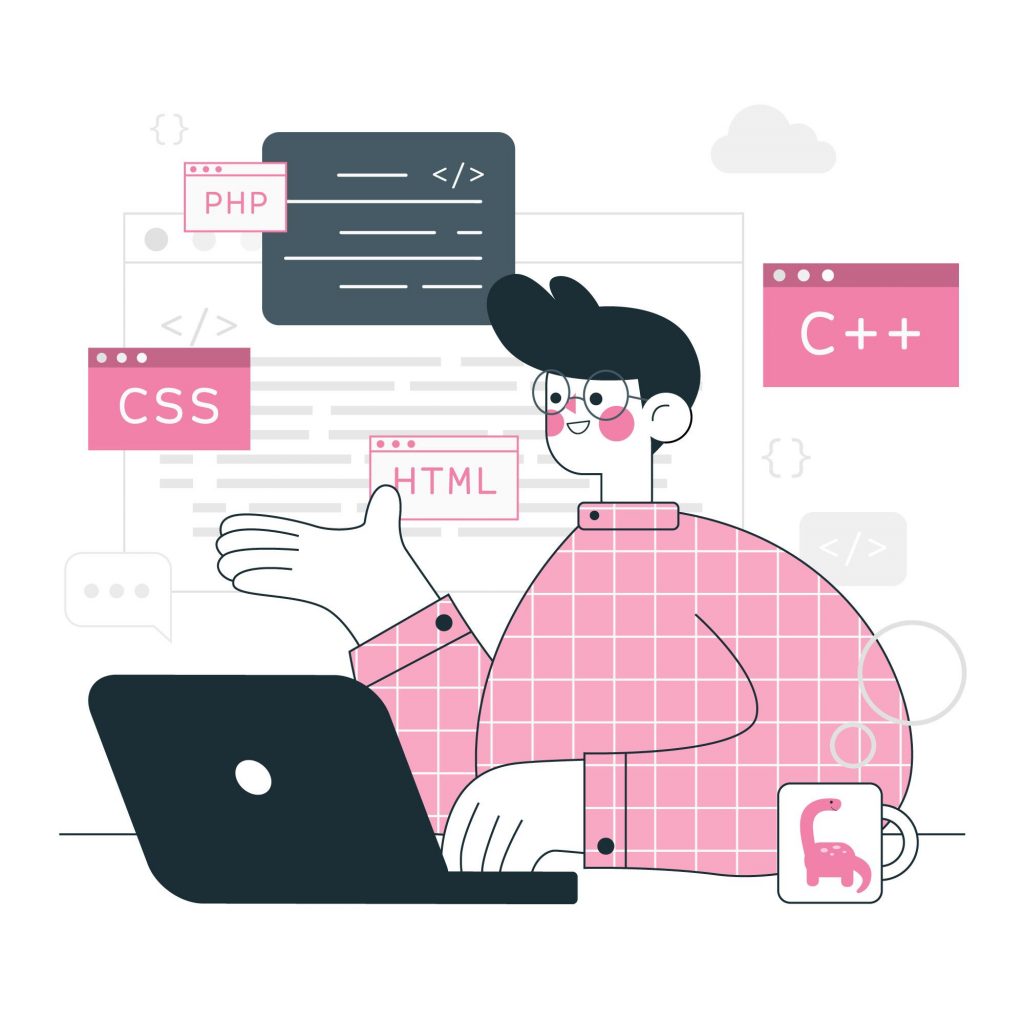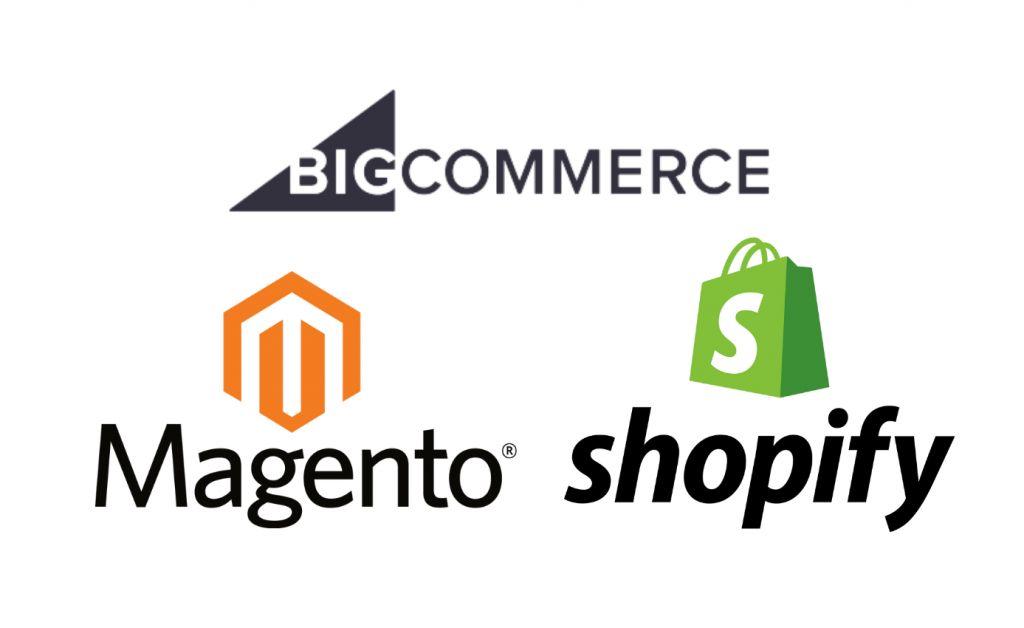A technology stack is like a toolkit for the developer for a certain project. For the customer, the technology stack needs to be determined so that it is possible to estimate the development cost and time of the project design. Therefore, it is easier to make a detailed estimate of the project for creating an eCommerce website when the technology stack is determined. When deciding on the technology stack, think closely if you chose the B2b eCommerce software solutions that are best to be used for the ideas of your project and if these technologies are a fit within the current trends.
What is a Technology Stack or a Tech Stack?
Professionally speaking, the technology stack is a list of all eCommerce technologies that are used to produce and manage an application or a website. In other words, a technology stack is a list of all skills and features that are going to be used by a developer or a team to accomplish the idea of the customer. For example, a technology stack of Facebook includes but is not limited to JavaScript, HTML, CSS, PHP, and ReactJS. For the online store, the eCommerce software stack will include more technologies, and the number and complexity of the technologies and the tools used depend on the scope and complexity of the online store.
Practically, a technology stack is often required when developers need to communicate their skill set and/or when the customer wants the developer to use the exact toolkit for the project. Most often though, the technology stack or the tech stack is going to be used to denote the specifications of the project and might be applied not only in the developers’ environment but also used in marketing, sales, writing and just any field you can think of.
One more area to use the tech stack is hiring. Without the list of tools and skills, it is hard to match a developer with a project. Having the technology stack well described allows the hr specialist to get the idea of the skills that need to be found in the candidate and helps candidates to understand whether they are a match. Practically, the technology stack helps to clarify the technologies that are necessary or the ones that are expected to be used.

Front End Tech Stack
Most often, eCommerce websites include frontend, backend, and third parties, and for each part, there is a need to choose preferred technologies. It is important to note that in the tech stack, front end, back end, and third party integration are equally important. As soon as each part contributes to the success of the project, there is a need to devote enough attention to each one.
While the front end helps to design the part of the eCommerce store that is seen and used by customers, the eCommerce backend supports the functioning of the eCommerce website with the required and anticipated smoothness and speed. Finally, third party integration allows customizing the experiences of the users and extending the features of the website stores along with the growth as necessary.
Front end technological solutions are important because this is the part that the customers use and see every time they visit the website. Therefore, the front end is better to be developed that the customer loves your platform when he or she visits your online store for the first time. Therefore, front end development often includes the most well-known and the latest technologies that are used to design and develop websites, namely:
- HyperText Markup Language or HTML
- Cascading Style Sheets or CSS
- JavaScript or JS
- SCSS
- SASS
- LESS
Of course, the full set of potential technologies for the front end development of the website is vaster and includes not only technologies listed above but also other ones with a variety of frameworks. For example, JavaScript is often used with such frameworks and libraries as Angular, React, Vue, jQuery, and others. However, there are only two basic elements of the frontend tech stack: HTML and CSS because these technologies are responsible for displaying the content on the page. HTML is the backbone for the content on the page while CSS is responsible for format and layout. Certainly, each developer might add more to the tech stack of the front end, but HTML and CSS are always there.
Back End Tech Stack
Back end is the invisible part of the project and it stands for creating the logic of the project and it is essential for the proper functioning of the front end. It is the eCommerce backend that is responsible for checking data, processing functions, and granting access to certain kinds of website use. Practically, the back end contains information from the application, the server, and the database, and the interaction between these three make a steady and strong basis for the functions of the front end that are offered to the users.
At this point, the server-side of the back end includes but is not limited to: operating systems, web servers, databases, storage & hosting, programming language, and web development platforms. However, there are four most important components, namely programming languages, frameworks, servers, and databases. Though, there is a need to understand that the choice of these is often related to the operating system used or intended to be used, the type of hosting, and many other things.
Servers
To manage the traffic effectively, you are going to need backend servers to manage client requests. Most often, Apache, Nginx, and Microsoft’s Internet Information Server (IIS) are used as the fastest and therefore the most popular ones. It goes without saying that the choice of the servers is going to be influenced by the operating system use, etc. but the characteristics of the backend server are crucial when it comes to performance.
Databases
Databases are essential to process a lot of required data, such as dates and geo positions, information about purchases, etc. Databases provide resources for storing the data and the fast processing of the search database requests, thus the database is the part of the backend stack that should never be underestimated. The most often used databases are MySQL, PostgreSQL, MongoDB, DynamoDB, and Firebase Database.
Programming Language
One more important choice is to pick a programming language for development. Programming languages form the way websites and apps work. There are many languages like C#, PHP, Ruby, Python, and more. The selection depends on the project specifications and business purposes, however, it always correlates with the operating system, database, and framework choice.
Frameworks
Frameworks help programmers to work faster. Thus, the selection of the web development framework is often related to the selection of the programming language. Frameworks help developers to automate routine tasks and thus to minimize the time spent for development. With frameworks, the development process is faster and easier. The list of frameworks includes but is not limited to Laravel, Yii2, Express, Nest.js, etc.

Third-Party Services
Third-party services are necessary to ensure additional services that are needed for the eCommerce website and are not included with B2b eCommerce software solutions out of the box. Third-party services allow faster functioning of the online store and improve the performance of the initial solution. Third-party services are usually applied to increase effectiveness and thus minimize the costs of development and management of the online store. Therefore, third-party services include but are not limited to social channels, payment gateway, analytics tools, shipping modules, CRM, and the marketplace, and more of the functions that are a must for the store but not that much-needed for the other types of websites.
Social Channels
Integration with social channels is one of the most important third-party services because it allows to promote the online store more effectively and helps customers to share their experiences with each other. Moreover, social channels might serve as a tool for building relationships with customers. Therefore, eCommerce websites usually choose one of the social channels or even all of them to integrate with, including Facebook API, Instagram API, Twitter API, Pinterest API, LinkedIn API, Google+ API, MySpace API. For example, Magento has got a variety of social integrations that are discussed in detail in the SOFTLOFT blog devoted to social integration tools.
Payment Gateways
ECommerce websites also need to process payments, and integration with payment gateways gets very helpful here. Most often, online stores choose to integrate with Stripe, PayPal, Braintree, and Authorize.net. Of course, the choice not to integrate with payment systems is fine too but it is easier to manage the transactions and store data when having integrated with third parties.
Analytics Tools
Analytics tools are necessary to assess the website performance at any given moment of time, thus they are an important tool for the owners to see the improvement space on the website. The analytics tools include but are not limited to KISSmetrics, Piwik, Hotjar, and Woopra. When integrated, it is easy to get timely information about website performance and see the points that are negatively impacting the customer experience. Thus, it is easier to boost sales and improve the content making it more engaging.
Shipping Modules
Integration with shipping modules makes it easier to manage shipments. With integrated shipping modules, such as Shipping Easy, FedEx, ShipStation, and others, it is more effective to organize shipping management.
CRM
CRMs are management platforms for improved and eased management of customers and customer information. With CRMs, such as Salesforce, Zoho, and Microsoft Dynamics seamless customer relationship management.
Upcoming Trends for eCommerce
There are many trends that impact eCommerce websites and the eCommerce technologies that are used to develop online stores. Therefore, it is important to be aware of the trends so that the online store is engaging and does not take much time and effort from developers to design and maintain.
Voice Commerce
Voice commerce is an interesting way to ensure the emission of eCommerce that is based on the recent trend to use voice control on devices. Voice Commerce is the approach that ensures the feature of searching the products on the website by pronouncing these products to the website. The main idea here is to minimize the time and effort spent for shopping online, thus engaging more customers to the online store.
AI (Artificial Intelligence)
AI is helpful to customize the website up to the needs of the customers so that the choices of the customers can impact the appearance of the website and the way it functions. Moreover, AI helps to understand the customers’ behavior when it comes to making choices and building preferences. This improves the customer experience and increases their engagement.
Chatbots
One more recent trend in eCommerce is the use of chatbots which are a part of AI. The use of chatbots implies that there are website bots that reply to the customer’s messages and thus help the customers to find the good they want or the help they need while increasing the effectiveness of the customer management, including gathering feedback.
Headless eCommerce
Another interesting trend is headless commerce that is based on the idea to step away from the traditional front end and back end approach. More information about the advantages and disadvantages of headless eCommerce is described in our SOFTLOFT blog post devoted to the headless approach.
Modern eCommerce Platforms
In most cases, online stores are built using eCommerce platforms that combine front-end and back-end technologies as well as third-party integrations. The idea of using the eCommerce platform is to ensure that the online store is built quickly and works smoothly.
Modern eCommerce platforms ensure that the online store has advanced SEO, marketing, multichannel retail, merchandising, order management, and client relationship management. Also, the system ensures that the customer journey is short and effective.
With modern eCommerce platforms, it is easy to manage orders using a centralized approach, and manage a single view of inventory in many sales channels. Finally, modern eCommerce platforms provide a personalized customer experience and feature awesome design to exceed the expectations of customers. The three most popular modern eCommerce platforms are Shopify, BigCommerce, and Magento.

Shopify
Shopify is an eCommerce platform that is used for creating online stores and is focused on providing a friendly admin panel to the customers. With Shopify, you are getting an easy-to-understand admin panel and necessary services for development online. However, the overlook for simplification brought some disadvantages to Shopify, such as few opportunities for customization and overreliance on the use of third parties to add any feature that is not standard for an online store. The cost of using Shopify starts at $29 per month + $2.9 +30% fee for using the default payment gateway, but the additional cost for the use of the third parties might be much higher.
BigCommerce
BigCommerce is a modern eCommerce platform that provides not only the services for building the online store but also services of hosting. When it comes to building an online store, BigCommerce is a great choice for beginners. However, while the site-building efforts are lower, customization opportunities are lower as well. With BigCommerce, it is easy to start a standard online store of a small scope. To make an online shop look more personalized, there is a need to purchase a paid theme. The cost of using BigCommerce starts from $29.95 per month + 1.5% transaction fee, and the platform also has a credit card processing fee, i.e. it is not a good choice for the online stores that are growing rapidly.
Magento
Magento is a self-hosted e-commerce platform which means that it gives its customers only software without web hosting. This gives significantly more freedom to the customers and allows for building and using open-source solutions. As a result of using Magento as a platform for the online store, you get endless opportunities for scaling and customization.
However, this kind of freedom requires more technical knowledge and experience when it comes to designing the online store. At the same time, Magento might be used as an open-source solution, offering freedom of choice and a variety of options as well as additional features that might be easily integrated for free.
With Magento, even movement of the online store to another server is easy. Therefore, Magento is a technology stack that is chosen and used by big eCommerce companies, the ones that intend to grow quickly in the coming years. More detailed information about the use and support of the Magento platform is provided as a part of the SOFTLOFT services description
Avoid Wrong Choices
Just make sure to choose the tech stack that is aligned with current trends, to be paced well with the time as Ecommerce software evolves. Also, make sure that the chosen eCommerce technologies fit your budget and operational costs well. However, the best way to avoid making wrong choices is to ask professionals for advice, which you can do by filling out a form to contact SOFTLOFT company.



